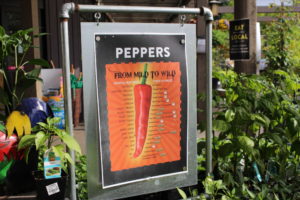The best poinsettia season ever
There are many new and different poinsettias being introduced every year; some think too many. Certainly there are too many for one retailer to carry or for one wholesale grower to offer.
‘Freedom Red’ is and has been the dominant poinsettia variety for several years. Freedom Red has dark red-violet bracts and dark green leaves. Some of the newer poinsettia varieties have the same general look of Freedom Red; however, an increasing number of newer varieties are different from Freedom Red in terms of bract color and/or plant form. The question that you need to consider is which colors, which forms do your customers want? And since the time for ordering your poinsettias is drawing near, now is the time to contact your supplier to see what will be available.
To help you make the most of poinsettia sales, consumer surveys were conducted at Purdue University and the University of Florida. Poinsettias were first separated into groups according to color, i.e., red novelty, marble, etc., and consumers were asked to pick their favorite in each color group. Then, all varieties were presented together, and consumers were asked to choose their overall favorite variety. The following information was derived from the results of these studies.
Poinsettia Preference
Since red is the traditional poinsettia color and since over half of the available varieties are red, you would assume that red varieties would dominate overall preference statistics. This was not the case. At both study sites, consumers showed a clear preference for novelty varieties (see sidebar, right). In fact, the highest ranking for any red variety was at the Purdue University trial, where ‘Redberry Punch’ ranked number six, followed by another red variety, ‘Deluxe Red’, at number seven and a novelty red, ‘Carousel’, at number eight.
So does this mean that red poinsettias are on their way out? Should the majority of your order be in novelty colors? Definitely not, on both questions. According to research published by the University of Illinois, 74 percent of Americans still prefer red poinsettias, which means that almost $163 million of the $220 million made in holiday poinsettia sales is from red varieties. So you should certainly keep plenty of red poinsettias on hand just offer a number of novelties as well. A good mix might be 60 percent red, 30 percent novelty and 10 percent “other” colors, but you should adjust these numbers based on past sales figures and your consumer demographics.
If you’ve ever received more than one red variety, you know that not all red shades are the same. There are differences in bract color and shape, plant shape, plant size and flower shape. Traditional reds either leaned toward violet, such as Freedom Red, or toward orange, such as ‘Success Red’, with American consumers preferring violet-hued reds. But that’s tradition, and we all know that poinsettias are becoming less and less traditional. With the introduction of several “true” reds, such as ‘Bright Red Sails’, preference might be shifting to a different shade. Figure 1, above, shows consumer preference for shades of red. Notice that Freedom Red, the industry “standard,” is ranked 10 out of 12 while “redder” reds, such as ‘Chianti’, are near the top.
The Payoff
So why bother with the newest novelty varieties? Doesn’t your supplier usually send you a mix of the best they have without the headache of having to research new varieties?
I can quickly think of two answers to these questions: differentiation and price point.
That mass merchandiser down the road, the one selling 6-inch poinsettias for $3.99, will not have the newest varieties. Novelty varieties are often harder to grow, requiring more time and expense, and because price points are so low at chain stores, wholesale growers cannot afford to offer the newest novelties to the chains. This gives independent garden centers the perfect opportunity to differentiate. (If you want suggestions for other ways to differentiate, turn to page 6.)
The other thing you can count on the mass merchandiser doing is general pricing. They price according to pot size instead of considering market demand. What you should be asking yourself on these novelty varieties is how much the consumer will pay. Are you the only place in town with purple poinsettias? Then you can probably charge quite a bit more for them than for a standard red. Are you the only store carrying 12-inch ‘Winter Rose’? Again, you can charge more.
The University of Florida horticulture club holds a poinsettia sale the day after their trials are over. Plants are priced according to local market value, but not the newest novelties. Last year, they had a number of ‘Plum Pudding’ for sale at twice what they were charging for Freedom Red. Not only did they sell out, they could have sold more plants. Consumers didn’t hesitate to pay the premium because they wanted the plant. There’s a lesson here for all of us.
The moral is: Stay current with new varieties, request particular varieties from your wholesaler, track your sales and charge whatever the market will support.


















 Videos
Videos





